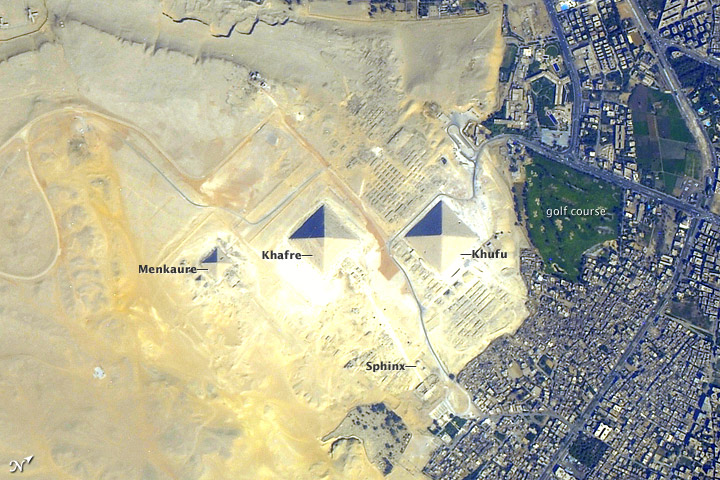
Bird's-Eye View: Egypt's Ancient Pyramids

The Great Pyramids at Giza are the last of the Seven Wonders of the Ancient World that still survive, as well as a favorite photography subject of astronaut's in orbit, according to NASA.
The image of the pyramids above is a subset of a larger image taken on July 25 by an astronaut aboard the International Space Station (ISS) with a long focal-length lens to provide high magnification.
In the image, the southeast-facing sides of the pyramids of the pharaohs Khufu, Khafre and Menkaure are all brightly illuminated by the Sun, while the northwest facing sides are in shadow.
The angling of the sun and the shadows also highlight smaller pyramids nearby, as well as rectangular, flat-roofed mastabas (tombs) to the east and west of Khufu's pyramid. These were the burial places of prominent people during the time of the ancient pharaohs.
To the southeast of Khufu's pyramid, the head and rear haunches of the Sphinx are also just visible, a NASA statement points out.
Modern Cairo stands in stark contrast to the light, washed-out colors of the pyramids and desert, with its densely packed buildings and roads.
The image was taken by the Expedition 32 crew of the ISS.
Sign up for the Live Science daily newsletter now
Get the world’s most fascinating discoveries delivered straight to your inbox.











